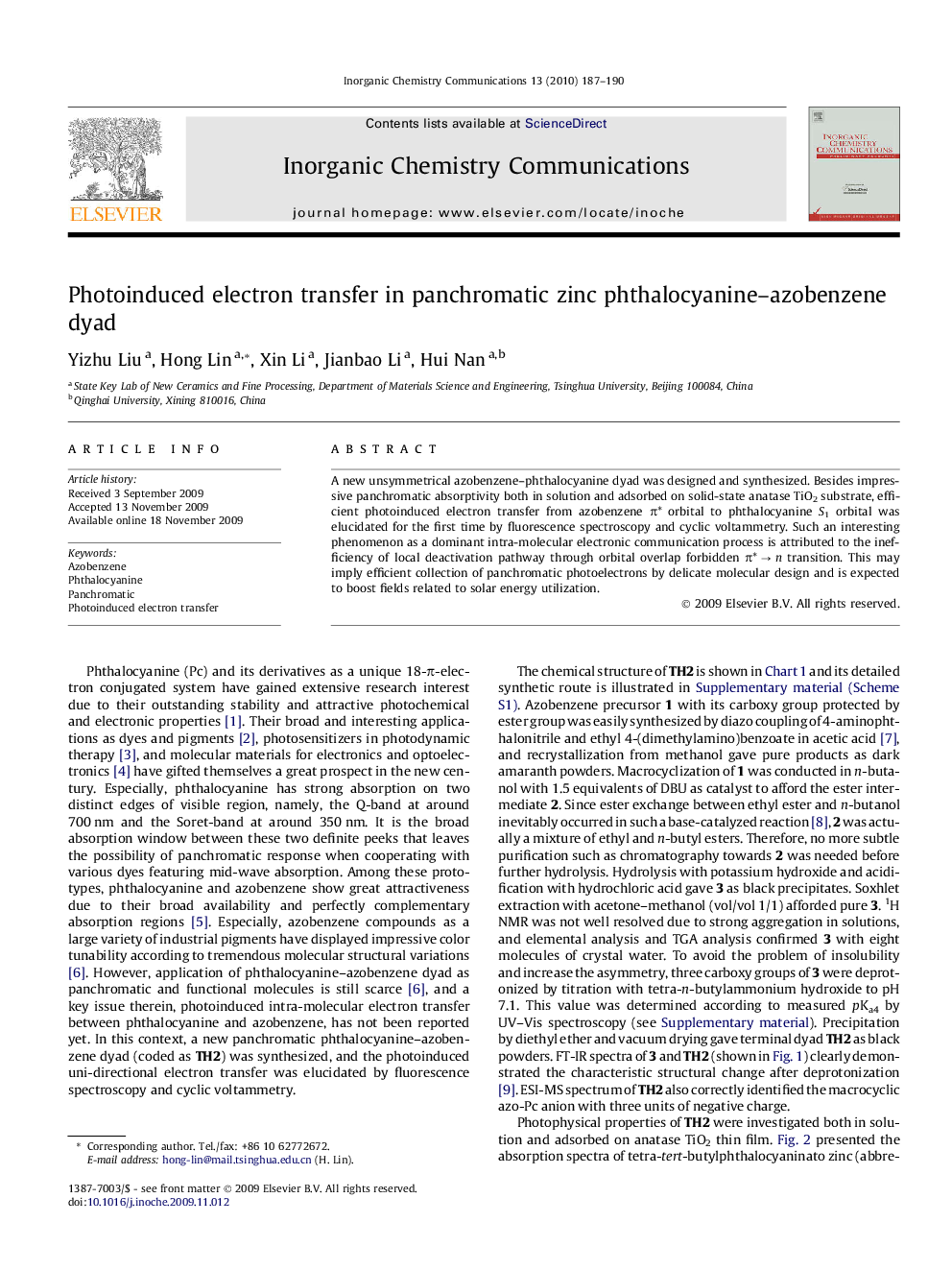| Article ID | Journal | Published Year | Pages | File Type |
|---|---|---|---|---|
| 1304516 | Inorganic Chemistry Communications | 2010 | 4 Pages |
A new unsymmetrical azobenzene–phthalocyanine dyad was designed and synthesized. Besides impressive panchromatic absorptivity both in solution and adsorbed on solid-state anatase TiO2 substrate, efficient photoinduced electron transfer from azobenzene π* orbital to phthalocyanine S1 orbital was elucidated for the first time by fluorescence spectroscopy and cyclic voltammetry. Such an interesting phenomenon as a dominant intra-molecular electronic communication process is attributed to the inefficiency of local deactivation pathway through orbital overlap forbidden π* → n transition. This may imply efficient collection of panchromatic photoelectrons by delicate molecular design and is expected to boost fields related to solar energy utilization.
Graphical abstractA new unsymmetrical azobenzene–phthalocyanine dyad was designed and synthesized. Efficient uni-directional transfer of photoelectron from azobenzene π* orbital to phthalocyanine S1 orbital was unexpectedly recorded.Figure optionsDownload full-size imageDownload as PowerPoint slide
